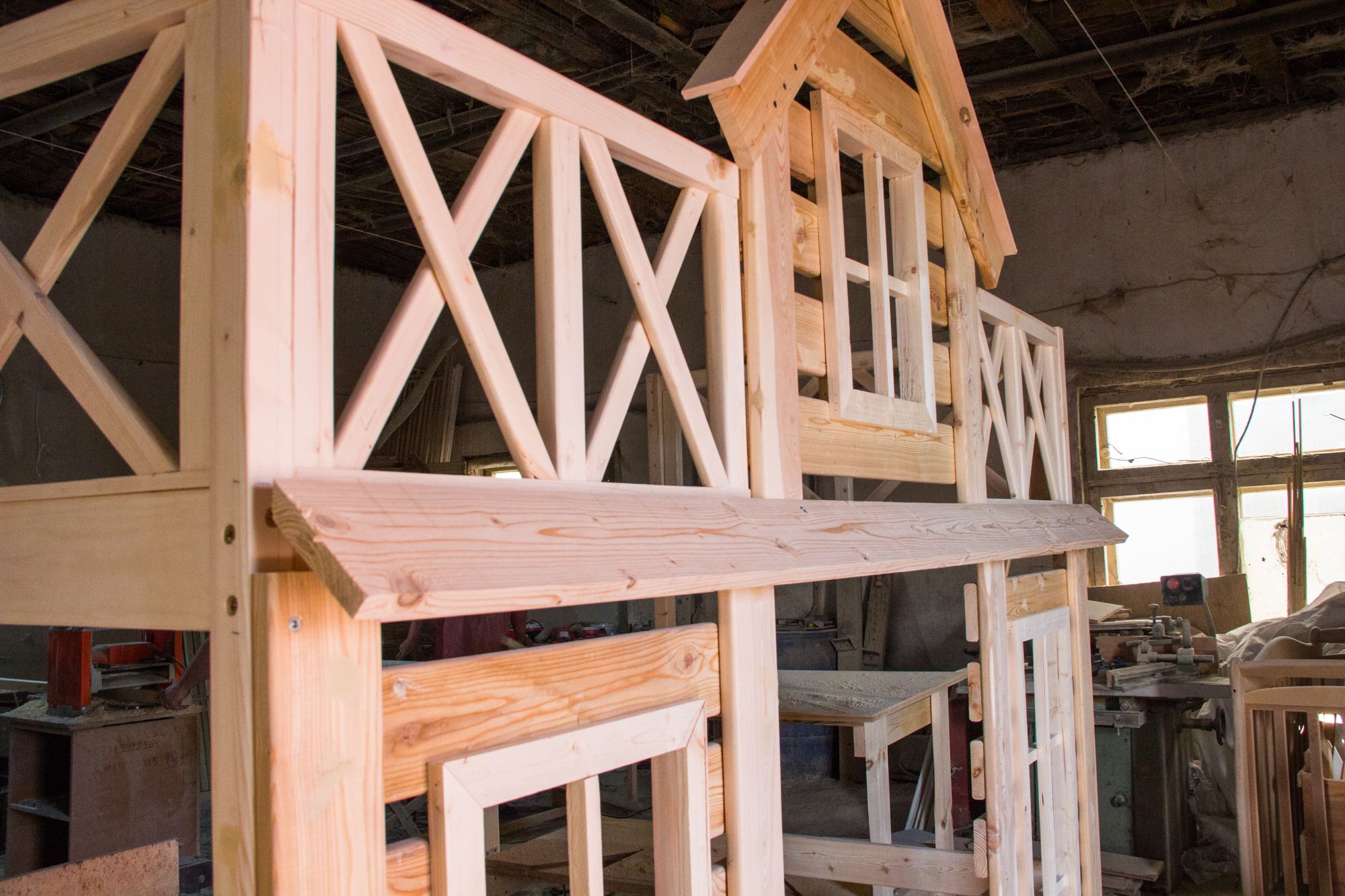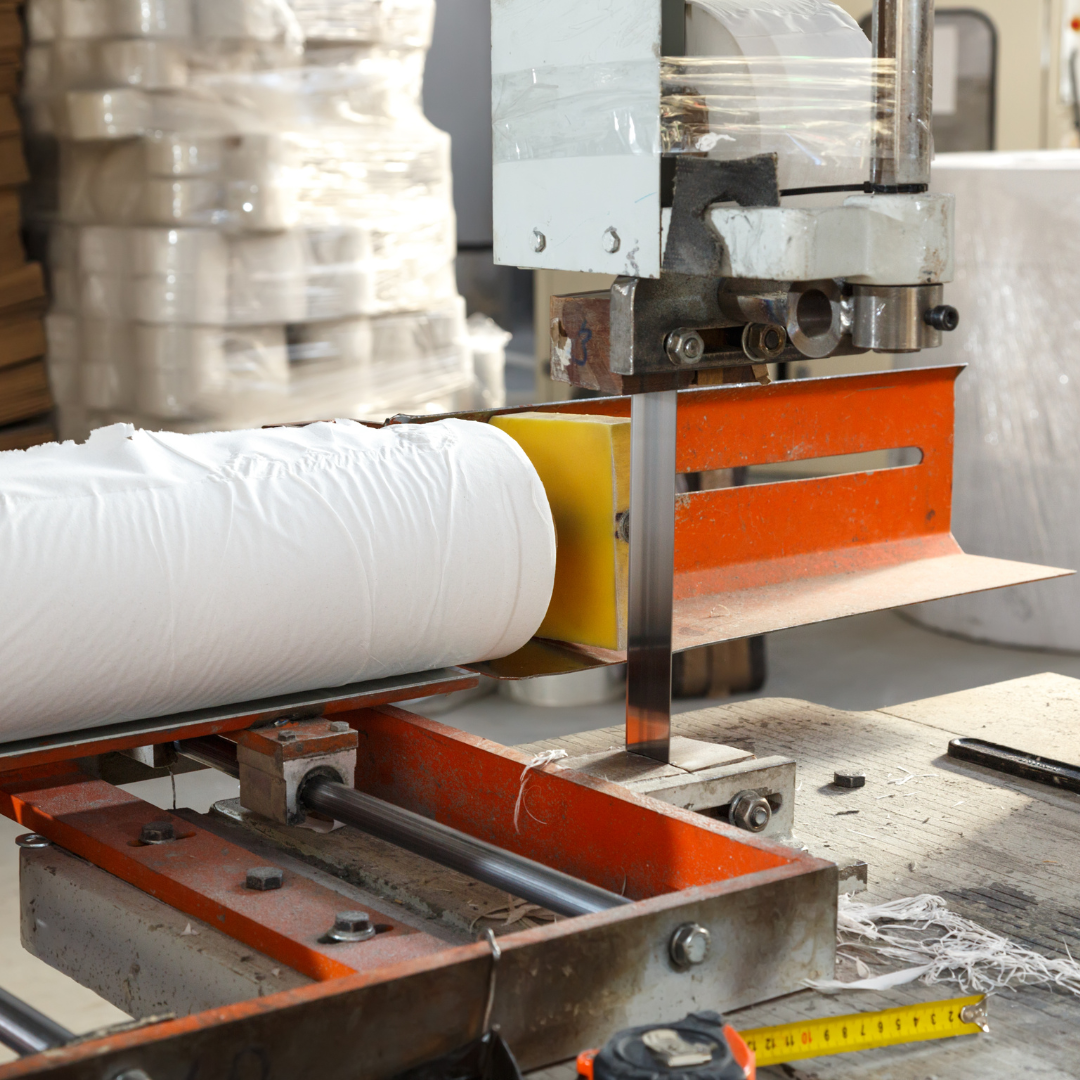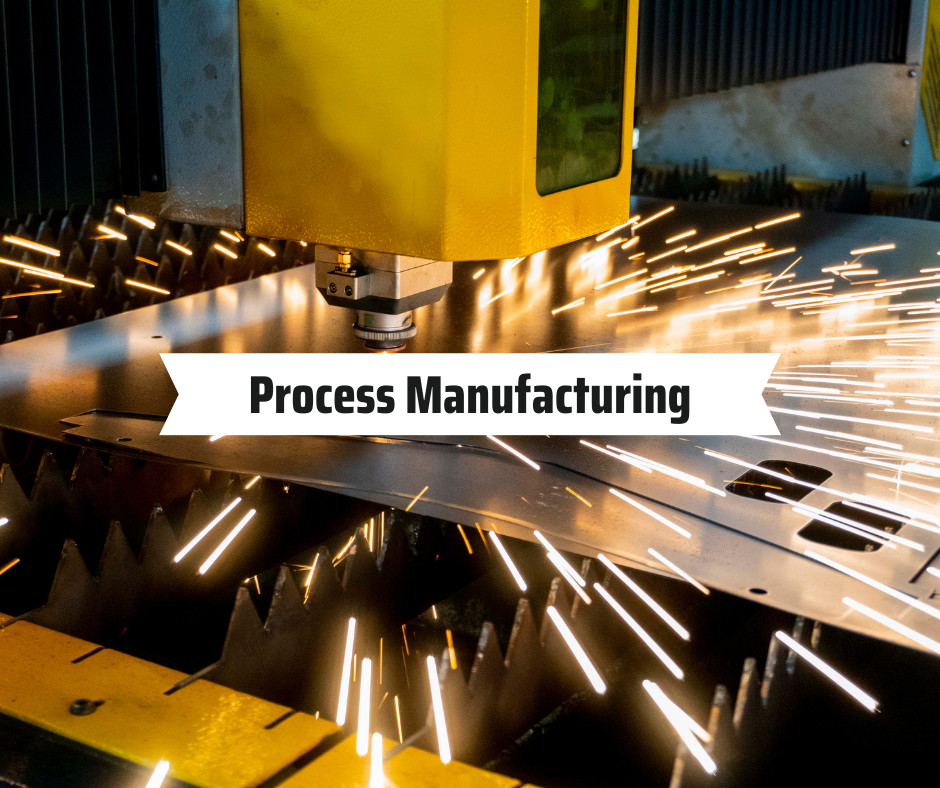Wood manufacturing is an art form that requires skill and craftsmanship, as well as knowledge of the materials and techniques used. Throughout the years, wood manufacturing has evolved to include new and innovative methods, allowing for faster production and better-quality products.
ERP.AI brings intelligence to modern wood manufacturing by streamlining operations, predicting material requirements, and optimizing production workflows for greater efficiency and precision.

Types of Wood Manufacturing
Wood manufacturing is a process that involves transforming raw lumber into products or components of a larger product. The manufacturing process can involve sawing, planning, drilling, shaping, sanding, and finishing.
The type of wood manufacturing process and product can vary greatly depending on the type of wood being used and the end product.
Sawing
Sawing is one of the most common forms of wood manufacturing. It involves cutting the wood into various shapes and sizes. Sawing can be done by hand, but most often it is done with a sawmill. Sawmills can use a variety of saw blades, including circular saws, bandsaws, and chainsaws, to create custom shapes and sizes for the desired product.
Planning
The purpose of planning is to make the wood smooth and even. This is done by running the wood through a planer, which removes small amounts of wood at a time. Planers can come in different sizes and shapes, depending on the type of product being made.
Drilling
Drilling is a process where holes are made in the wood. This is usually done with a drill press but can also be done with hand tools. The types of drills used will depend on the type of product being made and the size of the holes needed.
Shaping
Shaping is the process of forming the wood into the desired shape. This can be done with a variety of tools, such as routers, chisels, and hand planes. The type of tool and the type of wood will determine the type of shape that can be achieved.
Sanding
Sanding is the process of removing material from the wood by using abrasive materials. This is usually done with sandpaper but can also be done with power tools. Sanding is done to make the wood smooth and can also be used to remove imperfections or stains.
Finishing
Finishing is the process of applying a protective coating or sealant to the wood. This can be done with varnish, stain, lacquer, oil, or wax. Finishing can be done with a brush, a spray gun, or a power buffer.
The type of finish chosen will depend on the type of product being made and the desired look. These are the most common types of wood manufacturing processes. Each of these processes has its own unique characteristics and can be used to create different types of products. Depending on the type of product being made, different combinations of these processes may be used to create the desired outcome.
The Benefits of Wood Manufacturing
Wood manufacturing is a traditional form of manufacturing that has been used for centuries. It is a type of manufacturing that involves cutting, shaping, and assembling wood into a variety of products.
Wood manufacturing has been used to make furniture, cabinets, doors, windows, and a variety of other products. Today, wood manufacturing is still used as a way to create products for businesses and consumers alike.
There are many benefits to wood manufacturing that make it such a popular choice for businesses and consumers. The primary benefit of wood manufacturing is that it is a sustainable and renewable resource.
This means that the materials used in the manufacturing process can be easily replaced, and renewable sources of wood can be used without depleting the earth's resources. Another benefit of wood manufacturing is that it is relatively inexpensive compared to other materials.
This means that businesses can produce products at a lower cost than other materials, allowing them to keep their prices competitive and keep customers happy. Additionally, wood is a durable material, meaning it can last for many years with proper care and maintenance.
Wood manufacturing is also a versatile material that can be used for a variety of products. This means that businesses can create a variety of products using just one type of wood, allowing them to save on costs and time.
Additionally, wood can be painted, stained, and finished in a variety of ways to create unique products. Finally, wood manufacturing is a sustainable industry. This means that businesses can produce products that are environmentally friendly, while still producing a quality products.
This is important for businesses who want to make sure they are doing their part to reduce their carbon footprint. Overall, there are many benefits to wood manufacturing, making it a great choice for businesses and consumers alike. With its sustainability, cost-effectiveness, and versatility, it is a great choice for those looking for a durable and renewable source of materials.
Choosing the Right Wood for Manufacturing
Wood manufacturing is a complex and intricate process that requires a great deal of skill and knowledge. Choosing the right wood for manufacturing is an important part of ensuring that the end result is of the highest quality.
Every wood has its own unique characteristics and qualities, and understanding these characteristics can help you make the best selection for your needs. The most important factor when it comes to choosing the right wood for manufacturing is to understand your project’s purpose.
Different types of wood have different properties, so you need to make sure that the wood you choose is suitable for the job. For instance, hardwoods are better suited for furniture and cabinetry, while softwoods are better suited for farming or construction.
It’s also important to consider the grain of the wood. The grain of the wood can affect the look and feel of the finished product, so it’s important to select wood with the right grain pattern.
For instance, hardwoods with a straight grain are best for furniture, while softwoods with a wavy grain are best for framing. The cost of the wood is also an important factor to consider. Different types of wood cost different amounts, so it’s important to do your research and find the wood that fits within your budget.
Generally, hardwoods tend to be more expensive than softwoods, so if you’re looking for a cost-effective option, softwoods may be the way to go. Finally, you should also consider the availability of the wood.
Many types of wood can be difficult to find, so it’s important to make sure that the type of wood you choose is readily available. This will ensure that you can get the supplies you need without any delays.
Choosing the right wood for manufacturing can be a daunting task, but understanding the different types of wood and their properties will help you make the best selection for your project.
From cost to availability to grain, there are many factors to consider when picking the right wood for manufacturing. With a bit of knowledge and research, you’ll be able to find the perfect wood for your project.
Understanding Wood Grading
Wood grading is the process of categorizing wood according to its size, strength, and quality. It is important for wood manufacturers to understand and implement wood grading in order to ensure that their product meets customer expectations and quality standards.
The first step in wood grading is determining the size of the wood. This includes the width, length, and thickness. Measuring and marking the wood accurately is essential for accurate grading.
The size of the wood will determine the strength and overall quality, so it is important to be precise in the measurements. Once the size of the wood is determined, the next step in wood grading is to evaluate the strength of the wood.
This is done by examining the wood grain, knots, and other characteristics that may be present. The presence of knots, for example, will indicate a lower grade of wood as they can be more susceptible to splitting and warping.
The grain of the wood will also affect the overall strength, as different patterns of the wood grain can indicate different levels of strength. Finally, wood grading also includes assessing the overall quality of the wood.
This includes examining the color, texture, and any other signs of wear and tear. The color of the wood will determine its aesthetic appeal, while the texture will determine how it feels to the touch.
Any signs of wear and tear will also indicate a lower grade of wood, as it is less likely to last for a long time. Understanding wood grading is an essential skill for wood manufacturers.
It helps them ensure that their product meets customer expectations and quality standards. By following these steps and assessing the size, strength, and quality of the wood, manufacturers can produce high-quality products for their customers.
Process of Wood Manufacturing
Wood manufacturing is a process of transforming raw wood into usable products. It can involve a variety of techniques and processes, depending on the type of product being created. From creating furniture to building structures, the end result is a product that is both functional and aesthetically pleasing.
The first step in the wood manufacturing process is obtaining the raw materials. This may involve harvesting timber from forests or purchasing lumber from a supplier. Once the materials are acquired, they must be cut and shaped into the desired form. This typically involves the use of saws, lathes, routers, and other woodworking tools.
Once the wood has been cut to size, it must be dried in order to remove any moisture. This is done by exposing the wood to the sun or using a specialized drying chamber. Once the wood has been dried, it must then be treated to prevent warping, cracking, and other damage.
This is typically done with a wood preservative or sealant. After the wood has been treated, it must be sanded and smoothed. This is done with a variety of sanders, including belt sanders, orbital sanders, and disc sanders.
This step is important to ensure the wood is free from any splinters or rough edges. Once the wood has been sanded, it must then be stained or painted. This is done in order to give the wood a unique look and to protect it from wear and tear.
Stains and paints come in a variety of colors, allowing woodworkers to customize the look of the wood they are manufacturing. Finally, the wood must be finished. This is done with a variety of oils, waxes, and other protective coatings.
These coatings not only protect the wood from damage but also give it a glossy sheen. Wood manufacturing is a complex process, but it is necessary to create functional and aesthetically pleasing products that are used daily. By following these steps, woodworkers can create products of the highest quality.
Sustainable Wood Manufacturing Practices
Sustainable wood manufacturing is a growing trend in the woodworking industry, with more and more companies taking steps to reduce their environmental impact. From using responsibly sourced materials to implementing energy-efficient processes, sustainable wood manufacturing practices are becoming increasingly important for businesses that want to remain competitive and keep their customers happy.
Here’s a look at some of the key practices that make up a sustainable wood manufacturing process.
Source Sustainable Materials
The most essential step in making sure your woodworking is sustainable is to use materials that are sourced responsibly. Look for materials that are certified as sustainable by organizations such as the Forest Stewardship Council (FSC). Responsible sources of wood may include reclaimed wood, certified wood, or wood from sustainably managed forests.
Reduce Waste
Reducing waste is an important part of sustainable wood manufacturing. Invest in quality products that will last longer and require fewer replacements. Also, look for ways to reuse wood scraps and sawdust. Reusing wood scraps can save money and help reduce your environmental impact.
Utilize Energy-Efficient Equipment
Energy-efficient equipment can help reduce your energy costs while also reducing your carbon footprint. Invest in equipment that is certified as energy efficient by organizations such as the U.S. Environmental Protection Agency’s Energy Star program.
Implement Safety Practices
Safety is essential in any woodworking operation. Make sure your workers are aware of potential safety hazards and have the proper safety equipment. Establish a safety protocol and make sure that everyone is following it.
Use Water-Based Finishes
Many woodworking companies still use solvent-based finishes, which are not as environmentally friendly as water-based finishes. Water-based finishes can help reduce VOCs (Volatile Organic Compounds) and reduce the amount of hazardous waste produced. Sustainable wood manufacturing is an important part of being a responsible business. By taking steps to reduce your environmental impact, you can help ensure the sustainability of the woodworking industry for years t
Wood Treatments and Finishes
When it comes to wood manufacturing, there are a few important steps involved in the process, and one of those is wood treatments and finishes. It is important to understand what wood treatments are and what finishes are available to you when it comes to wood manufacturing.
Wood treatments are processes that are used to preserve wood, protect it from the elements, and increase its durability. Treatments can include preservatives, fire retardants, and fungicides, as well as waterproofing agents.
There are a variety of treatments available, depending on the type of wood and the purpose of the treatment. One of the most common treatments used in wood manufacturing is the use of preservatives.
These are substances that are applied to the wood to help prevent the growth of mold, mildew, and other fungi. They can also help protect the wood from termites and other pests.
Additionally, preservatives can help to reduce the risk of decay and rot. Other treatments that are often used in wood manufacturing include fire retardants, which can help reduce the risk of fire damage to the wood.
These treatments can also help to reduce the chances of the wood becoming warped or cracked. Fungicides are also often used to help protect against the growth of fungi, which can cause discoloration, cracking, and warping.
Once the wood has been treated, it is then ready to be finished. Finishes are applied to the wood to give it a certain look and feel, as well as protect it from damage. Finishes can range from stains and varnish to paints and lacquers.
Stains are often used to enhance the natural color of the wood while also helping to protect it from damage. They can also be used to give the wood a certain look or feel, such as a rustic or antique look. Varnishes are also often used to give the wood a glossy finish that can help to protect it from the elements.
These finishes can also help to preserve the wood and keep it looking new for longer. Paints can also be used to give the wood a certain look or feel, such as a bright and vibrant color. They can also be used to protect the wood from the elements, as well as make it more durable.
Finally, lacquers can also be used to give the wood a certain look or feel. This finish can help to protect the wood from moisture and other elements, as well as make it more durable.
Wood treatments and finishes are important steps in the wood manufacturing process. It is important to understand what treatments and finishes are available, as well as how to properly apply them. This can help to ensure that the wood is properly treated and will last for many years.
Common Wood Manufacturing Processes
Wood manufacturing is the process of transforming raw materials into useful products, such as furniture, flooring, cabinets, and other items. Wood manufacturing has been an important part of human civilization for thousands of years.
Today, modern technology has improved the efficiency and quality of wood manufacturing processes. The most common wood manufacturing process is sawing. Sawing involves cutting wood into pieces of the desired shape and size.
This process can be done by hand with a manual saw, or by large machines, depending on the job. Sawing is followed by planing, which is used to smooth the wood surface and create a uniform thickness.
The next step in wood manufacturing is joining. This process involves gluing together multiple pieces of wood to create a single, larger piece. This is done using adhesives, which create a strong bond between the two pieces.
Joining is often done with dowels, screws, and nails, as well as other specialized fasteners. After the wood has been joined, it is time to finish the piece. This is done through sanding, staining, and varnishing.
Sanding is used to remove any unevenness or roughness on the surface of the wood. Staining involves adding color to the wood while varnishing is used to protect the wood from moisture and other environmental factors.
Finally, the wood is ready for assembly. This is the process of putting the individual components of the wood product together. Assembly can be done by hand or by machine, depending on the complexity of the product.
Once the assembly is complete, the wood product is ready for use. Wood manufacturing is an important part of the global economy. It is a process that has been around for centuries and has been continuously improved by modern technology. This process involves sawing, planning, joining, finishing, and assembly to create quality products that are used in many industries.
How Wood Manufacturing Has Evolved
Wood manufacturing has been around since the dawn of mankind, and it has been used in countless ways to create tools, furniture, and other items of beauty and utility. Over the years, wood manufacturing has evolved significantly in terms of its efficiency, precision, and quality.
One major advancement in wood manufacturing has been the development of computer numerical control (CNC) technology. CNC machines use computer-controlled tools to cut, shape, and finish wood more precisely and efficiently than ever before.
This technology has allowed for faster production times, higher accuracy, and greater consistency between multiple pieces of wood. Furthermore, CNC machines are now capable of creating complex designs that would have been impossible to make by hand.
In addition to CNC technology, there have been several other advancements in wood manufacturing that have made it easier to produce high-quality products. For example, the use of lasers and robots has allowed for more accurate cutting and finishing of wood, as well as the ability to produce intricate patterns and designs.
The use of computer-aided design (CAD) software has also made it possible to create highly detailed designs quickly and accurately. Finally, the use of quality control systems and 3D printing technology has allowed wood manufacturers to produce higher-quality products with greater consistency.
Quality control systems can detect defects in wood quickly, while 3D printing technology can create intricate shapes and patterns with a high degree of accuracy. Overall, wood manufacturing has come a long way over the years.
The use of advanced technology has allowed for greater accuracy and efficiency, while quality control systems and 3D printing technology have enabled manufacturers to create higher-quality products with greater consistency. All of these advancements have revolutionized the way that wood is used today and have made it easier than ever to design and produce beautiful and useful products.
Challenges of Wood Manufacturing
The wood manufacturing industry is an important part of the global economy, providing a range of products and services to both businesses and individuals. But the sector faces a number of challenges, from rising raw material costs to increased competition from other industries. In this blog, we explore the key challenges of wood manufacturing and how businesses can best address them.
Rising Raw Material Costs
The cost of raw materials is a major challenge for wood manufacturers. Many materials, such as hardwood, are becoming increasingly expensive as demand increases. This can have a significant impact on the cost of producing items, as well as the profitability of a business.
To address this challenge, businesses can look to source more economical materials, such as recycled wood or softwood. They can also consider using more efficient manufacturing processes, such as automated cutting and machining.
Environmental Regulations
The wood manufacturing industry is subject to increasingly stringent environmental regulations. Businesses must ensure they adhere to all relevant laws and regulations, or risk significant penalties.
To minimize the risk of non-compliance, businesses should ensure they have a robust environmental policy in place and keep up to date with any changes to the legal requirements.
Increased Competition
The wood manufacturing sector has seen an increase in competition from other industries, such as plastic and metal manufacturing. This has resulted in more competitive pricing and reduced margins for wood manufacturers.
To stay competitive, businesses must focus on quality and customer service. Investing in new technologies and processes can also help to differentiate a business from its competitors.
Labor Shortages
The wood manufacturing industry is facing a shortage of skilled labor as workers retire or move to other sectors. To address the issue, businesses must look to employ more staff and provide better training opportunities.
Investing in new technologies, such as automated machinery, can also help to reduce the need for manual labor. Overall, the wood manufacturing sector is facing a number of challenges. By understanding the key issues and taking steps to address them, businesses can ensure they remain competitive in an increasingly challenging market.
Wood Manufacturing Technologies
Wood manufacturing is the process of turning raw wood into a variety of finished products. This is done using a variety of technologies, including sawing, planning, drilling, and routing. Depending on the desired end product, different types of wood manufacturing technologies may be used.
Sawing
Sawing is one of the oldest and most common methods of wood manufacturing. This process involves cutting wood into the desired shape and size using blades or saws. Different types of saws are used depending on the size and type of wood being cut.
For example, circular saws and band saws are used for cutting large pieces of wood, and jigsaws are used for cutting smaller pieces.
Planing
Planing is a process used to make the surface of a piece of wood smooth. This is done by running a planer over the surface of the wood, which removes the top layer of wood fibers. Planers come in a variety of sizes and can be used for both rough and fine planning.
Drilling
Drilling is the process of creating holes in wood using a variety of tools, such as a drill press, drill bit, and hand drill. The size and shape of the hole depending on the size and shape of the bit being used. Drilling is often used in furniture making and for creating holes for screws, hinges, and other hardware.
Routing
Routing is the process of creating decorative edges or shapes on a piece of wood. This is done by running a router over the surface of the wood, which is equipped with a variety of cutting tools. Routing is often used in furniture making and for creating decorative edges or patterns on wood.
These are the main technologies used in wood manufacturing. Depending on the desired end product, different techniques may be used in combination to create the desired result.
For example, sawing and planing may be used to create a flat surface, while drilling and routing may be used to create decorative edges. With the right tools and techniques, wood manufacturing can be used to create a variety of products.
The Future of Wood Manufacturing
The future of wood manufacturing is an exciting one that promises to revolutionize the industry. As technology advances, wood manufacturers are continually finding new ways to improve their processes and create products that are more durable, attractive, and cost-effective.
With the potential for automation, renewable resources, and improved production techniques, wood manufacturing is poised to become a major player in the global manufacturing market.
As with any industry, the future of wood manufacturing will be determined by the ability of manufacturers to innovate and find new ways to create products. Automation is one of the biggest changes coming to the industry, as more and more processes are being automated, improving efficiency and reducing costs.
In addition, renewable resources such as bamboo and cork are becoming more popular among manufacturers as they are less expensive and more sustainable than traditional materials.
Additionally, 3D printing and laser cutting technologies are becoming more prevalent, allowing for faster turnaround times and greater customization. The use of technology in wood manufacturing is also becoming more commonplace.
Computer numerical control (CNC) machines are being used to create intricate pieces of furniture, cabinets, and other wood products. These machines are able to quickly and accurately cut and shape materials, saving time and money. 3D printing is also becoming increasingly popular, allowing manufacturers to quickly create custom products with a high level of detail and accuracy.
Additionally, digital fabrication is becoming more common, allowing manufacturers to create products with a greater level of precision and accuracy. Overall, the future of wood manufacturing looks very promising.
With advances in technology, automation, and renewable resources, wood manufacturers are in a great position to take advantage of new opportunities and create products that are more efficient, attractive, and cost-effective. As the industry evolves, manufacturers will be able to use these new tools to create products that are both innovative and competitive.
How AI Improves Manufacturing Systems
From automating routine tasks to enabling predictive analytics, AI enhances every stage of the production cycle. It analyzes real-time data to forecast demand, optimize inventory levels, and reduce machine downtime through predictive maintenance. This leads to smoother operations and fewer disruptions.
AI plays a key role in this transformation by integrating AI with manufacturing workflows—allowing businesses to gain deep insights into their supply chain, automate production planning, and fine-tune resource allocation.
How Can Deskera Assist You?
As a manufacturer, you must keep track of your inventory stock. The condition of your inventory has a direct impact on production planning. It also has a direct impact on people and machinery use and capacity utilization.

Deskera MRP is the one tool that lets you do all of the above. With Deskera, you can:
- Control production schedules
- Compile a Bill of Materials
- Produce thorough reports
- Make your dashboard
Deskera ERP is a complete solution that allows you to manage suppliers and track supply chain activity in real time. It also allows you to streamline a range of other company functions.
Deskera Books allows you to manage your accounts and finances better. It helps maintain good accounting standards by automating billing, invoicing, and payment processing tasks.
Deskera CRM is a powerful tool that organizes your sales and helps you close deals rapidly. It enables you to perform crucial tasks like lead generation via email and gives you a comprehensive view of your sales funnel.
Deskera People is a straightforward application for centralizing your human resource management activities. Not only does the technology expedite payroll processing, but it also helps you to handle all other operations such as overtime, benefits, bonuses, training programs, and much more.
Related Articles:













